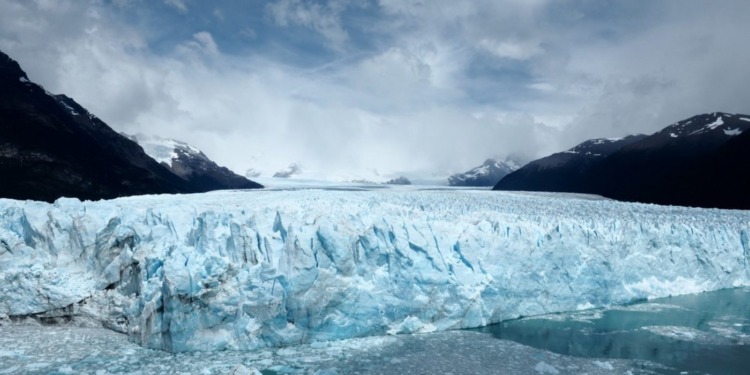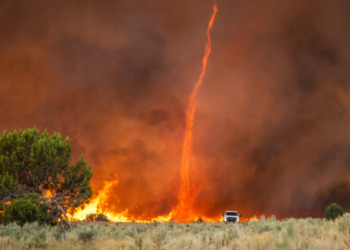Climate changes has already affected European countries in many ways in recent years, and it has recently reached a disturbing, often dramatic degree on the continent, depending on the location.
From biodiversity loss, forest fires, decreased food yields, and greater temperatures to the most recent, the collapse of alpine glaciers in the Italian Alps, believe it or not, they can all be largely traced back to the climate crisis.
According to the World Resources Institute, it has been recognised that the European Union is the world’s third biggest greenhouse gas emitter after China and the US in 2015.
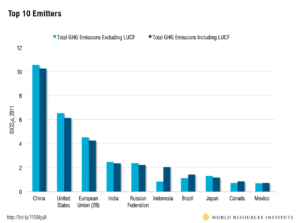
That, to a large extent, is why the EU is the main active participant in international climate discussions, having ratified the Paris Agreement in order to coordinate efforts to reduce carbon emissions at the EU level. The union has taken on a vital role in the fight against climate change to preserve the eco- systems equilibrium, an issue that is very high on the list of priorities of most EU citizens.
A recent Eurobarmeter survey (July 2021) revealed that European citizens consider climate change to be the most serious issue facing the world. More than nine out of ten people surveyed consider climate change to be a serious problem (93%), with almost eight out of ten (78%) considering it to be very serious. .
So, how has climate change recently affected European countries?
Here is a quick survey of the areas in Europe that are currently suffering or have suffered the most from the consequences of climate change and atmospheric pollution: One is linked to the other, as pollution, largely a by-product of industry and transportation, directly impact the climate, causing greenhouse gas emissions that are at the source of global warming.
-
Italy attributes the tragic glacier breakup to climate change
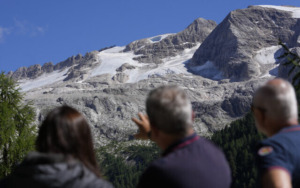
The collapse of Italy’s largest Alpine glacier was blamed on climate change on Monday, as chances of finding more survivors from the tragedy that killed at least seven people vanished. Authorities claimed eight people were hurt and 14 were reported missing, but it was unclear how many climbers were captured when the glacier gave way on Sunday.
According to Maurizio Fugatti, the president of Trento province, ice and rock thundered down Marmolada, the highest peak in the Italian Dolomites, at 300 kilometres per hour (185 miles per hour).Rescuers employed thermal drones to look for heat from potential survivors, but the prospects of finding them were “low to none,” according to Giorgio Gajer, head of the region’s Alpine Rescue Service.
The remains found thus far have been “ripped apart,” according to rescuer Gino Comelli. The accident occurred just one day after a record-high temperature of 10 degrees Celsius (50 degrees Fahrenheit) was reported at the glacier’s peak, the biggest in the Italian Alps.
According to Prime Minister Mario Draghi, it was “unquestionably connected to the worsening of the environment and the climatic crisis.”
-
Wheat harvest is worsening in France, the EU’s largest breadbasket, and agricultural production in Italy is at risk

France’s wheat harvest is worsening as the European Union’s largest grain grower experiences record heat, adding to global food supply concerns.
According to the most recent FranceAgriMer statistics, the percentage of the country’s soft-wheat crop assessed in good or very good condition decreased to 73 percent as of May 16, a level that is far lower than the one made at same time last year. A dry, hot streak throughout France is draining soil moisture at a critical time for crop development, with weekend temperatures anticipated to rise beyond 35 degrees Celsius (95 degrees Fahrenheit) in numerous locations.
Not only in France, but also farmers in the “Po Valley”, Italy’s major agricultural production area, are experiencing Italy’s worst drought in 70 years. Five regions in Northern Italy have declared a state of emergency. Although it may seem to be like “drought” is not something new in Italy, this time it is worse than ever and the crops are at risk.
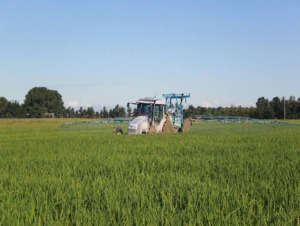
The weather outlook in Italy for the next two weeks is not promising. For example, meteorologists have announced that there will be no rain in Pavia, a city in Northern Italy, and temperatures will vary between 22 and 33 degrees, with a high of 38 next weekend.
Farmers are unsure how much they will lose during the next harvest – for example, harvesting the rice crop occurs between September and October. Moreover, rising prices as a result of the ongoing war in Ukraine are equally concerning. The cost of inputs needed for a good crop, nitrogen fertilisers and diesel fuel, is rising fast, sometimes costing three times as much as last year.
-
Europe’s heat wave affects Both Spain and France
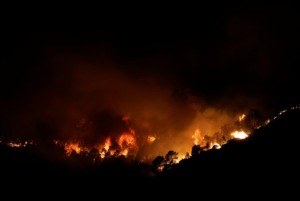
France, Spain, and other Western European countries are bracing for a scorching weekend that is expected to shatter new records and raise concerns about forest fires – once again raising the issue of climate change.
However, the French national weather forecaster Meteo France reported that June temperature records had already been broken in 11 regions on Friday and that temperatures might reach 42 degrees Celsius in other areas.
Forest fires destroyed approximately 9,000 hectares (22,240 acres) of land in Spain’s northwestern Sierra de la Culebra area, forcing 200 people to flee their homes, according to regional sources. In addition, due to a neighbouring fire, more than 3,000 people were evacuated from the Puy du Fou amusement park in central Spain.
Firefighters were also combating flames in other areas, including Catalonia’s forests, where weather conditions exacerbated the fight. On the UN-sponsored World Day to Combat Desertification and Drought, 17 June, Spanish Prime Minister Pedro Sanchez hailed firemen “who risk their lives on the frontlines of flames.”
This is just a snapshot of what has happened in some parts of the continent and what is likely to come in the following days. Clearly, there will be many more stories coming out from many other countries across Europe and the world. No one can forget the horrendous heatwave India and Pakistan just suffered through. There is no doubt that those events, taken together, sound a loud warning: Climate change is upon us.
Editor’s Note: The opinions expressed here by Impakter.com columnists are their own, not those of Impakter.com. — In the Featured Photo: The glaciers surviving climate changes Featured Photo credit: EGU Blogs


